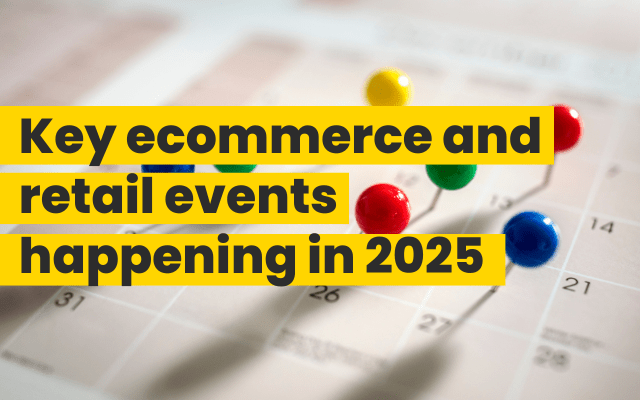Today’s marketers are often tasked with balancing campaign efforts across a range of different media channels, this can make it challenging to effectively track each tactic’s success and overall impact on the business.
The sheer volume of data now available to us means we have more information than ever before to help us make decisions when it comes to ad budget planning. However, the difficulty is in understanding exactly how budgets are performing in real-time and which channels are the most effective. Our decisions need to be based on a completely impartial analysis of the data sources and we must somehow exclude our own bias, built up over years of personal experiences.
How do you develop a high-impact and cost-effective budget plan that utilises the most successful channels for your business?
Be clear on your goals
Media planners need to identify the combination of channels to achieve a specific result. Their objectives generally align with business goals, such as long-term growth and improving ROI. Media planning will often utilise a wide range of tactics to increase brand awareness, generate leads, or drive conversions to help their organisations accomplish these goals.
Fingers in too many pies?
Businesses often feel like they must have a presence on all media channels to be successful. However, if this isn’t the right channel for your potential customer segment, then you could be wasting time and budget.
For example, a retailer may be better off investing in Facebook and Pinterest, where their customers spend the most time. Similarly, a B2B business would be better investing in channels such as LinkedIn.
The key to success is not to utilise as many channels as possible, but to find a mix that facilitates better service and suits customers’ requirements and habits.
Clarify your budget parameters
It all starts with a strategy. Once you’re clear on whether you’re looking to increase traffic to your website, raise brand awareness or generate sales, this will help you move on to narrow down which channels are the right ones to invest in. Referencing current ad benchmarks, the average CPM (Cost Per Thousand) on Facebook across all industries is $14.40 and LinkedIn is around $33.80.
Building in some testing into your ad strategy is also good practice, particularly across channels you’ve not yet used or which have not delivered the return expected previously. We’ll talk more about testing later.
Piggyback on your competitors
All good marketers keep a close eye on their closest competitors. Conducting regular competitor analysis, not just to stake out their positioning, but to find out which channels they’re investing in, can help fast forward your own ad planning. But importantly, it helps you understand the context in which your ads are landing.
Tools such as SEMRush and SpyFu will give you an indication of where your competitors are spending their budgets. You can also understand what keywords they’re bidding on to inform your own campaigns.
New competitor insights
There is another competitor metric digital marketers can use to sharpen their ad strategy. The BOSCO™ Index generates a score out of 1000, on how effective a retail business is with their investment in paid media. BOSCO uses trusted third-party data alongside machine learning to assess online presence, using the most important KPI’s to score digital performance against your closest competitors.
Testing, testing, 1-2-3
In terms of allocating spend, we recommend allocating between 10%-20% of your budget for testing investment in new channels. This gives you the flexibility to try out new approaches and channels, and enough data to make better predictions on where to invest next.
Holy grail: the right channel mix
According to a report by Gartner, 72.2% of digital marketing budgets now goes to digital channels, proving how important it is to make the right decision. It can feel like the holy grail, as getting the right channel mix amidst a complex and ever-moving media landscape requires constant attention, testing, analysis and smart investment decisions.
As well as using competitor intel to inform your approach, your ad strategy should lean on research that tells you where your target audience spends most time online. If your target audience is Gen Z, you may be missing opportunities on channels such as TikTok which has enjoyed phenomenal growth, and is one to consider in your mix.
As media channels adjust to a new, post-covid backdrop, does your business have any additional budget to explore marketplaces such as Amazon or eBay? Whatever your view on Amazon’s explosive growth in recent years, for ad marketers it’s hard to ignore the fact its ad revenues expected to reach $39.45 billion in 2023.
Measuring effectiveness
ROI is a key measure for any marketing investment. You need to monitor the results and ensure you’re hitting your KPI’s and marketing goals.
What is true is that bias and guesswork still play a large role in selecting marketing channels. Confirmation bias, for example, leads us to look for data patterns that prove a hypothesis or support an existing belief. Similarly, familiarity bias means that the things that are familiar to us hold greater weight in our minds. For example, Google and Facebook being the most popular media channels. It’s important to avoid this, and take a holistic view of your marketing channels and activities.
A new secret weapon for planning and forecasting
Born from a team of expert digital marketers and data scientists is a new platform called BOSCO™, which marketers are using to add extra firepower to their planning and forecasting process. BOSCO’s Planner helps to:
- Review and improve online marketing performance.
- Forecast actionable campaign scenarios.
- Further optimize campaigns to achieve specific marketing goals.
BOSCO™ is being used across retail marketing teams to:
- Create better performing marketing plans based on set time periods.
- Improve ad targeting to generate maximum ROAS.
- better understand how to plan marketing budget more effectively.
Each budget plan gives insights into how to invest your budget across multiple marketing channels, and detail on in-channel campaign optimisation.
The results, insights and recommendations provided by BOSCO™’s Budget Plan can help ensure digital campaigns are planned more effectively – without the risk of bias that might come from ad agency recommendations, or from the bias recommendations given by each individual media channel. This channel-agnostic AI can prove extremely effective in helping marketers to maximize online investment real-time and meet overarching ad objectives.
Sharpen your ad budget planning for 2022
If you’d like to save tonnes of reporting time, better predict how your ad spend will perform and have a clear view of your ad performance, book a 15-minute demo with one of the BOSCO™ Team. Or drop us an email on team@askbosco.io if you’d like to receive more digital marketing insights like these.




